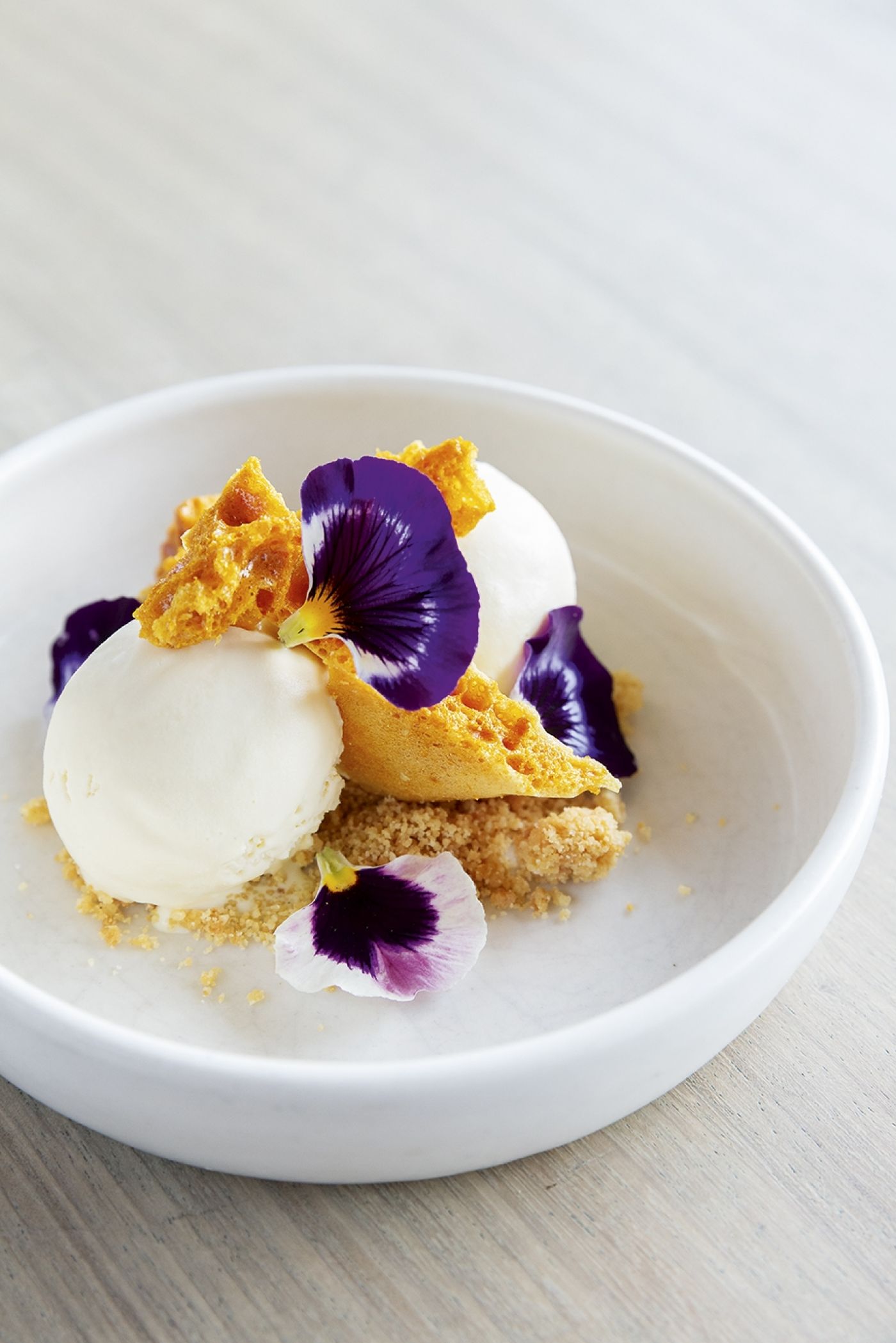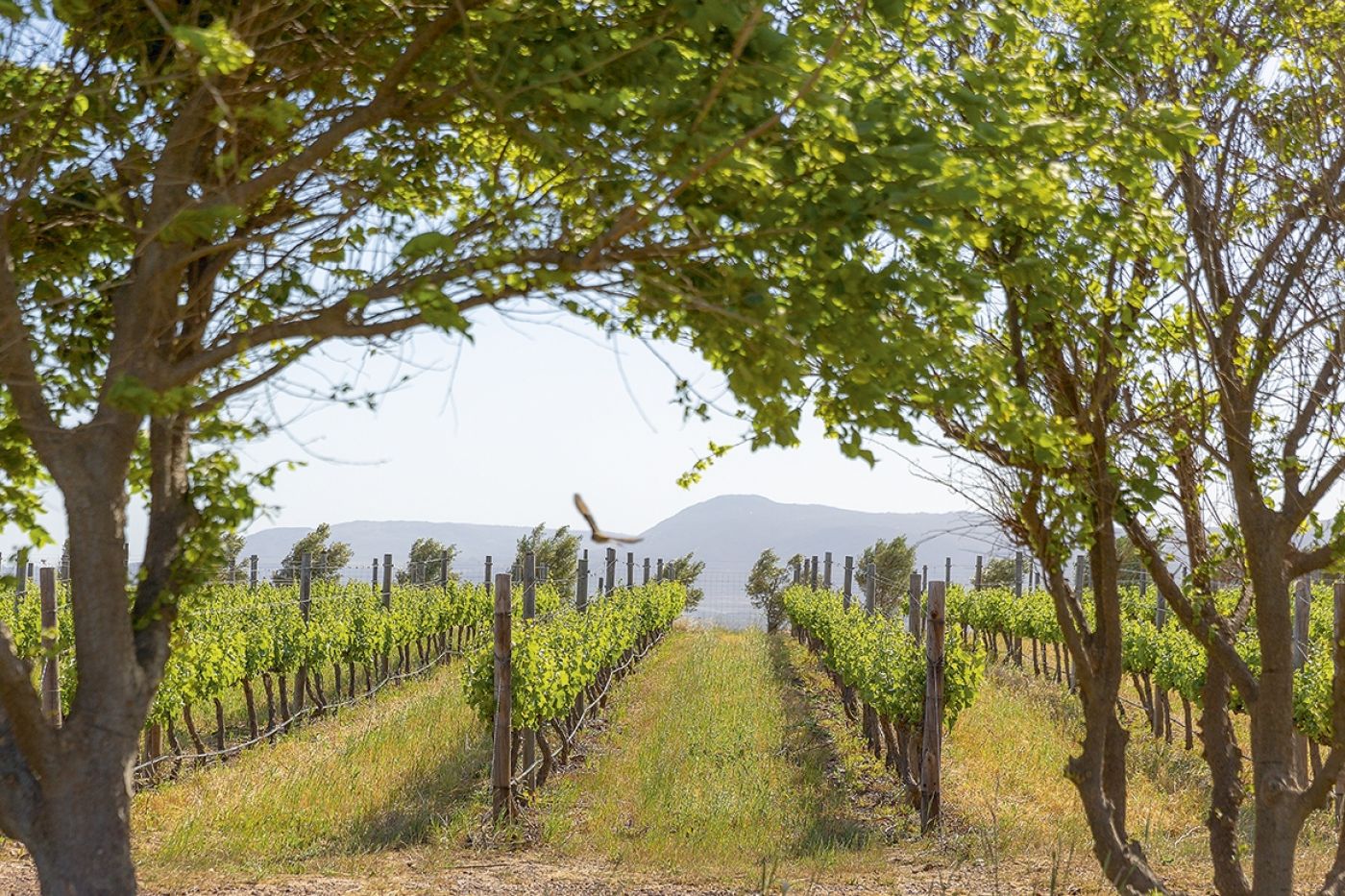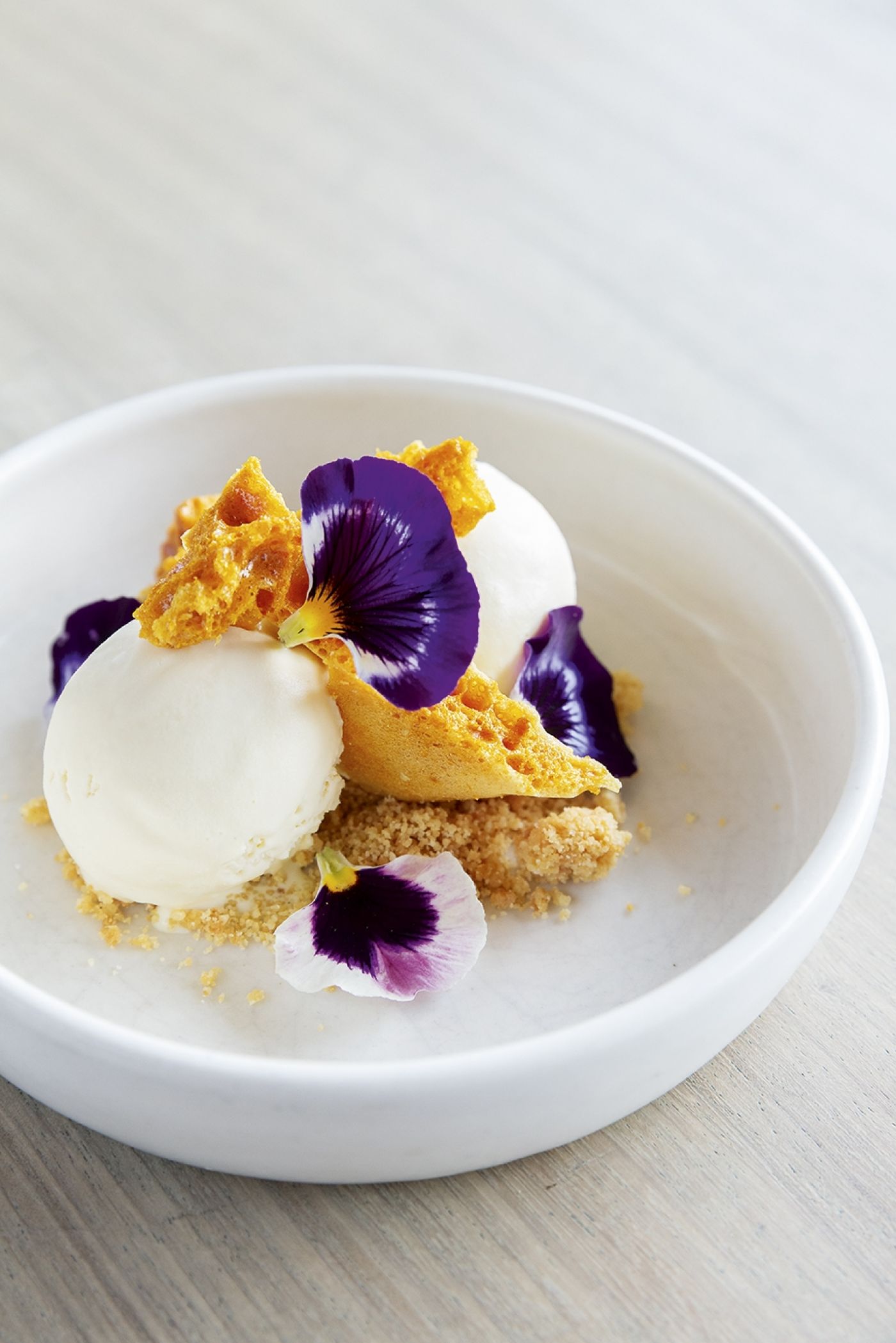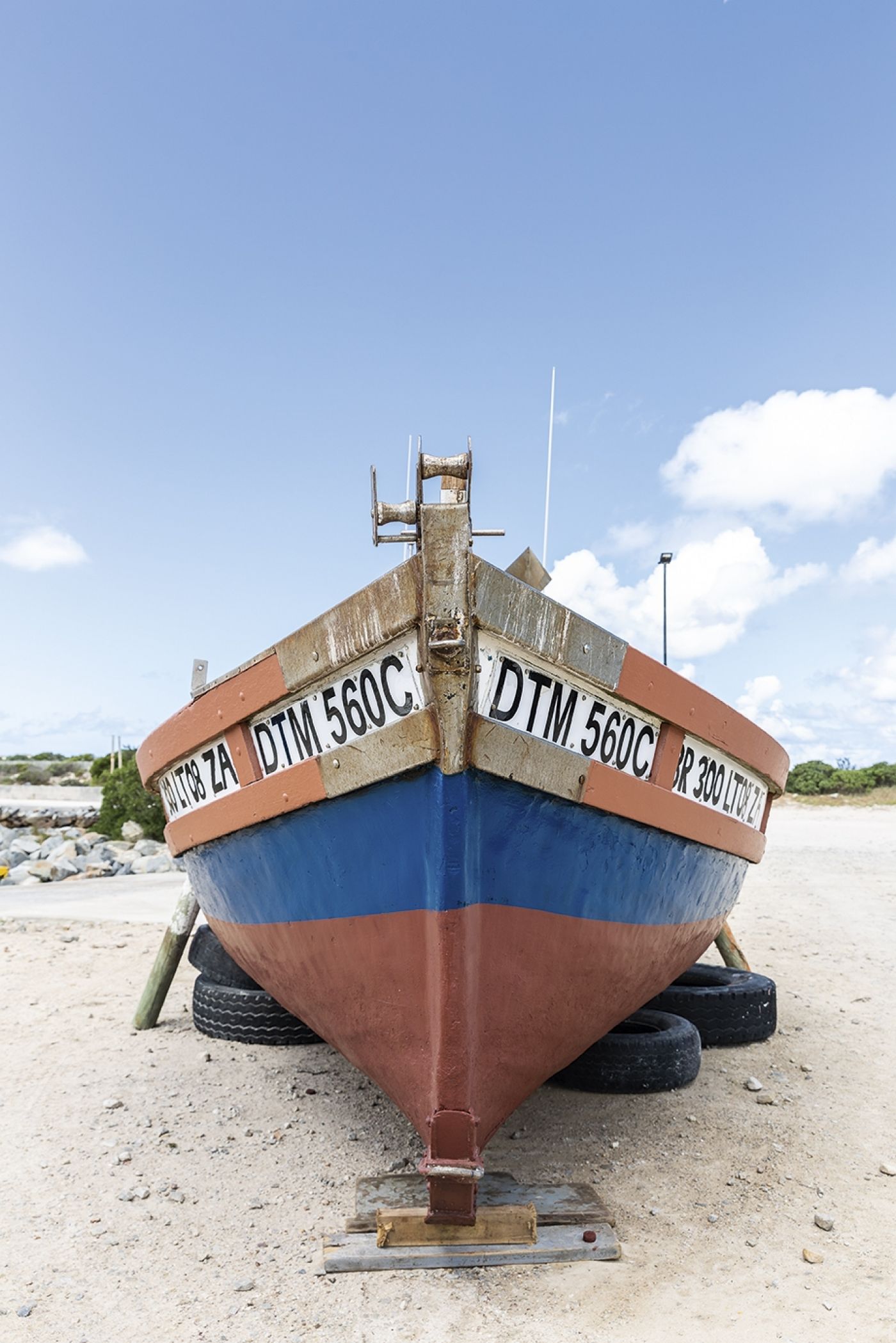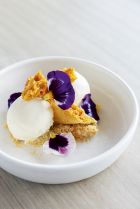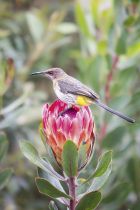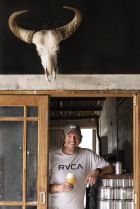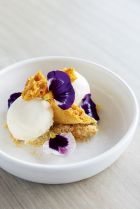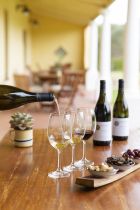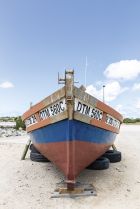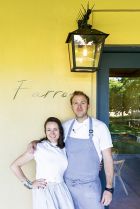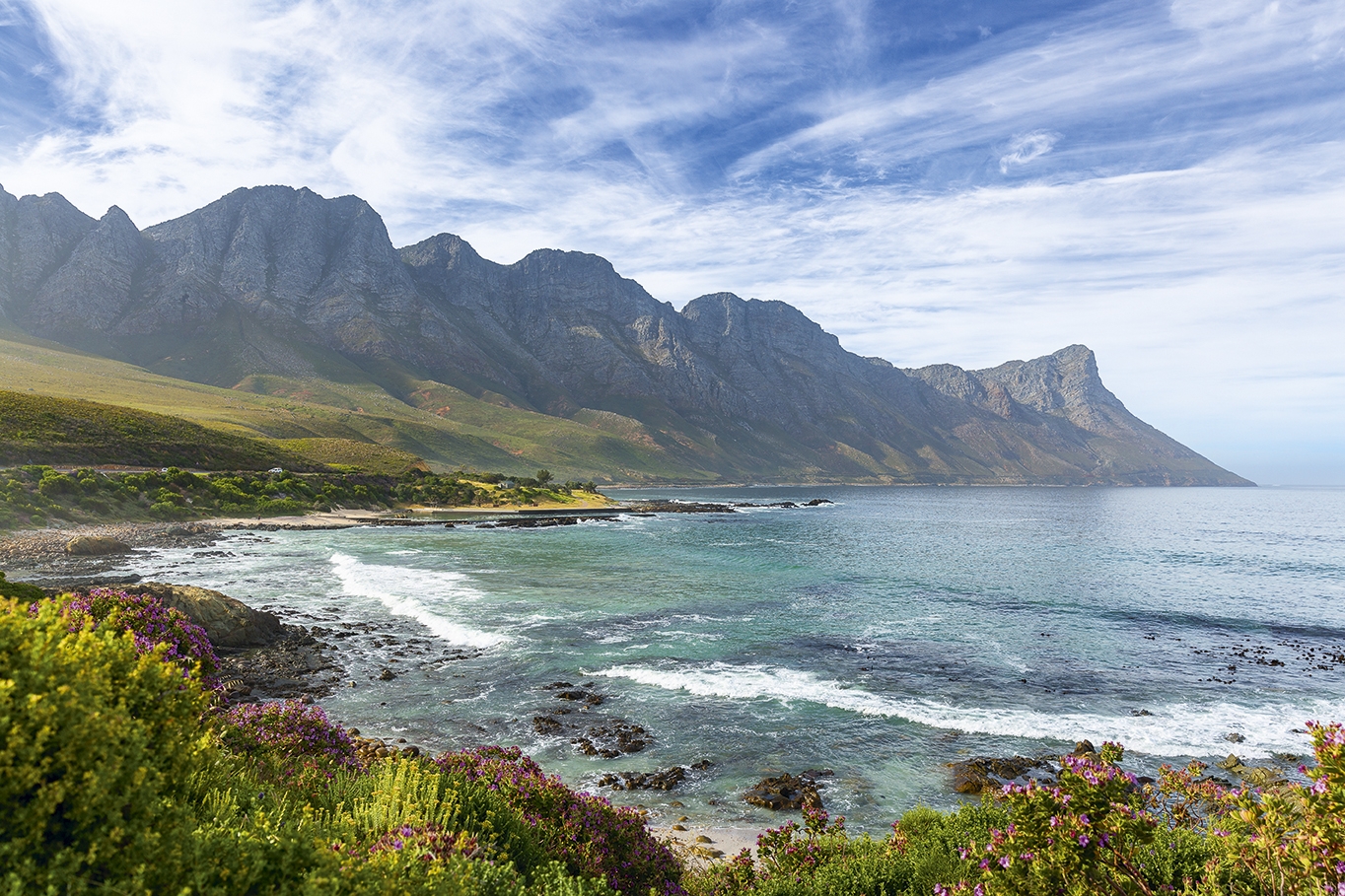
Food and Travel Review
There are surely few roads in South Africa quite so beautiful as Clarence Drive. With the Kogelberg Biosphere Reserve to the left and the sparkling waters of False Bay to the right, this 30km scenic drive is the most idyllic way to leave the cosmopolitan streets of Cape Town in the rearview mirror and settle into the laid-back charms of the Overberg.
Don’t worry if you’ve never heard of the Overberg. Indeed, for many road-trippers, the region – literally ‘over mountain’ in Afrikaans – is little more than rolling farmland to be hurried through on the way to the more famous Garden Route. But slow down and turn off the N2 freeway, then meander down quiet roads and you’ll discover just why so many locals have fallen in love with this quiet corner sprawled along the wild south coast of Western Cape province, beyond the Hottentots Holland Mountains.
For most travellers their first taste of the Overberg is Hermanus, the seaside town famous for its shore-based whale watching during the southern hemisphere’s winter and spring. The resulting influx of annual tourists plus a steady flow of weekenders from Cape Town spur a lively restaurant scene. It’s thanks to this creative culinary environment that the town and its surrounds were inscribed as a Unesco Creative City of Gastronomy in 2019.
It’s at the Hermanus Country Market that you’ll find the clearest example of the region’s culinary creativity. Since it opened in 2008, a trip to the Saturday market has become a weekly ritual for locals, who fill their shopping baskets and settle in at one of the communal tables with a take-away from one of the 20-odd food stalls.
‘To make it easy for people to taste and discover different dishes, we encourage food that’s easy to share, whether it’s platters of sushi or a great pitta cut into four,’ says market organiser Michael Bayer. And the offering is eclectic, ranging from traditional jaffles (toasties) filled with curried mince to local cook Melinda Conroy’s famous spanakopitas, made with fresh herbs from her own garden.
One could easily spend a day here, but if you’re keen to get back on the road, head east along a road framed by flowering watsonias and fynbos-clad mountain ranges and half an hour later you’ll hit Stanford. Set on the banks of the Klein River, this bustling country town with a vibrant food scene has become popular with weekenders and semigrants from Cape Town. The wide lawns and vineyard setting of The Tasting Room at Stanford Hills Estate make it an ideal choice for families, while the Ou Meul Bakery does a good line in artisan bread and bakes. But on a Saturday morning, the weekly Stoep Market is the place to be.
A feature of Queen Victoria Street for the past 14 years, the market sets up on the stoep – Afrikaans for a covered porch – of the Stanford Hotel. Spread across half a dozen tables you’ll find a delicious array of local produce handmade by locals. The traditional koeksisters – a sweet treat of plaited dough, deep-fried and soaked in sugar syrup – are superb, as are the homemade pies. Don’t leave without a jar of local chimichurri or regional farm honey.
From the Stoep Market it’s just a short walk to one of the village’s most celebrated restaurants: in an elegant cottage on Du Toit Street, chef Madré Smit Bester whips up an inspired menu of elevated Cape country cuisine. Tables spill out on to a vine-covered veranda overlooking a tidy garden, with space for just 30 diners per service. Madré is a familiar face in the Overberg, having cooked in kitchens across the area for more than 20 years and, post-pandemic, her
eponymous restaurant is a family affair, with just herself and an assistant in the kitchen, and husband Morné out front. That lack of pretence, and the hospitality that comes with it, shines through in the seasonal chalkboard menu. It’s compact, with a handful of options per course, but each has been crafted to speak of her decades spent cooking in the Overberg and her deft touch with local ingredients.
‘I’m not a trained chef – I’m just a cook,’ says Madré with a warm smile. ‘It’s country food. It’s honest food. We try to keep it comforting and approachable, and I just want to bring through the simplicity of living in the country.’
The Overberg has long been a bread basket for the Western Cape province. Wheat, canola (rapeseed) and barley are staple crops, while sheep, cattle and dairy herds fill the valley pastures. The area has a mix of vineyards and orchards alongside artisan cheese producers and small-scale farmers growing heirloom vegetables. Along the coast, meanwhile, boats land crates of fresh yellowtail, kabeljou (kob) and silwervis (silverfish).
‘Our fish is all local, from the harbours at Gansbaai or Struisbaai, and we only have it when it’s fresh. If the weather’s bad and the boats don’t go out, we just don’t serve fish,’ explains Madré. ‘Low food miles are really important for me, but I also think food tastes better when it’s grown locally.’ What’s local and seasonal directly informs the menu – if you visit in spring, look for the unique risotto of anchovy and waterblommetjie, a flowering aquatic plant
harvested from shallow farm dams across the Overberg.
Country bolthole Stanford Valley Guest Farm makes for an idyllic overnight stop, with cosy rooms – some self-catering – scattered across wide lawns overlooking the fynbos slopes of the Akkedisberg mountains. The farm has become a hub for mountain bikers and trail runners, with a network of marked trails offering a fine way to work up an appetite for the menu at the Manor House Restaurant.
Since joining the estate in 2019, chef Janine van der Nest has put her own stamp on this contemporary country eatery. Supporting local producers is key here: cheese from Stonehouse Cheese Estate, just down the road, and home-cured sausages from a butcher nearby. Herbs come from the kitchen garden and the estate has its own herds of springbok and sheep. ‘Our menu changes every three months, based on what is seasonal, and we work with so many fantastic local growers who supply us with special produce for the restaurant,’ says Janine. ‘Although we’re a country kitchen we’re quite modern in our approach to cooking.’
Take her starter plate of smoked snoek, a fish bountiful in Cape waters and an important source of protein for coastal villages. Plated here as a pâté served with brioche infused with sweet potato, it’s a clever reinvention of snoek en patat, a classic Cape dish traditional to many seaside communities.
While the region is famous for its gastronomic diversions, the Overberg is also known for its award-winning wine cellars. And the most picture-perfect vineyards in the region are found just inland from Hermanus.
Here the Hemel-en-Aarde – ‘Heaven-and-Earth’ – Valley lives up to its name, with mountains draped in lush fynbos above a patchwork of orchard, vineyard and woodland. It’s here you’ll find some of the most storied names in South African wine: the likes of Hamilton Russell, known for their chardonnay, and Bouchard Finlayson, widely regarded as the pioneer of pinot noir in South Africa.
At the top of the valley lies the innovative Creation wine estate. With the cellar set amid manicured rows of vines, it’s hard to imagine that just 20 years ago this landscape was little more than rocky sheep pasture.
But Creation’s founders Jean-Claude and Carolyn Martin – who both hail from families in the wine business, his in Switzerland, hers in South Africa – saw the potential of this site high up the Hemel-en-Aarde. They weren’t wrong, and in 2022 Creation was rated the best vineyard in South Africa – and No 38 in the world – at the World’s 50 Best Vineyards Awards. Today, the contemporary winery and restaurant offers both guided tastings and inspired pairing experiences,
matching the nuances of Creation’s terroir-driven wines with an extensive à la carte offering – as well as a six-course tasting menu with wine pairing – consisting of plates that speak to the producers of the region.
‘It’s about combining innovation and heritage, but for us, it’s also about sustainability and showcasing local ingredients,’ says Jean-Claude. ‘Eighty percent of produce come within 80km of Creation. It’s great for the local economy and it’s also great for the visitors who come here hoping to discover what’s local.’
For a different take on the wines of the region, hit the road once more to swap the bucolic valley for the windswept Agulhas Plain near the village of Elim. It’s not an easy place to grow grapes, but the ferricrete soils and relentless coastal winds bring a characteristic minerality to the wines.
‘We have more wind than other wine growing areas, and our wind is colder,’ explains Conrad Vlok, winemaker at Strandveld Vineyards, one of 11 wineries that make up the Agulhas Wine Triangle. ‘From the east, south and west, the wind comes straight from the sea.’
In 2022 Conrad won South Africa’s prestigious Diners Club Winemaker of the Year Award for his Pofadderbos Single Vineyard sauvignon blanc, but his Rhône-style red blend The Navigator, and Adamastor blend of sauvignon blanc and semillon, are both worth the bumpy drive out to the unpretentious farm tasting room. From Strandveld it’s a scenic 45-minute journey to Cape Agulhas, a worthwhile diversion that takes you to the southernmost tip of Africa. Heading north again, you’ll find yourself in a rolling landscape of fields planted with grains – it’s a region that is at its most beautiful in winter and early spring, when the landscape becomes a patchwork quilt of vibrant greens and yellows. Through Napier, for a quick stop at the famous Farm Stall, the winding country road
loops back to the coastline near the town of Gansbaai.
It’s in the hills above town that Michael Lutzeyer has spent nearly three decades creating the Grootbos Private Nature Reserve, dedicated to conserving the unique fynbos vegetation of the Overberg. A pair of lodges – Forest and Garden – offer luxurious suites hidden away amid ancient milkwood forests, and they make a perfect base for exploring the region. Garden Lodge was recently rebuilt, an architectural marvel that maximises the coastal views while ensuring a perfect immersion in the landscape.
At Grootbos, trained nature guides lead daily excursions to watch whales on the nearby cliffs, or you can explore the caves that were once home to early hunter-gatherers that roamed the shoreline. On the reserve itself, nature drives and horseback excursions head out into hillsides carpeted with pristine fynbos.
That botanical bounty also provides ample inspiration for the Grootbos kitchens, where executive chef Ben Conradie heads a team of 25 chefs creating a range of menus that explore the flavours of the vegetation. The stand-out is Ben’s dedicated Fynbos Menu, a fine-dining experience that incorporates both indigenous fynbos and local culinary traditions. His innovative Mock Scallop dish also taps into Grootbos’ ethos of sustainability, swapping imported seafood for a king oyster mushroom and pickled shimeji, flavoured with wild sage from the reserve.
But the highlight is surely the cured rainbow trout. Sustainably raised on a farm nearby, the raw fish is cured with a rub of lemon, sugar, salt and local wild confetti bush. ‘Confetti bush is very fragrant,’ says Ben. ‘Often when curing trout you’d use fennel, but the confetti bush brings a beautiful lemony botanical flavour to the trout. We serve it with a pea purée with wild nasturtium leaves, which bring a unique bitterness and a touch of acidity.’
The sublime flavours of that trout dish may well linger long in your memory, and as you leave Grootbos behind and point the hire car back towards Cape Town, the feeling is bittersweet. This abundant, food-oriented region is hard to leave, but at least there are the sinuous curves and coastal views of Clarence Drive to console you on the way home.
Words by Richard Holmes, photography by Sarah Coghill.
Richard Holmes and Sarah Coghill travelled courtesy of South Africa Tourism. southafrica.net
Where to stay
Grootbos Private Nature Reserve A pair of luxury lodges set on a 3,500ha private nature reserve, offering five-star service and amenities amid ancient milkwood forests and landscaped gardens. Activities include horse riding, shark cage diving, bird watching and multiple hiking opportunities. Double suites from £982, including full-board. R43 between Stanford and Gansbaai, 00 27 28 384 8053, grootbos.com
The Marine Since 1902 the ‘grande dame’ of Hermanus has enjoyed a spectacular clifftop location overlooking Walker Bay, with elegant suites boasting impressive sea views – a particular bonus for visitors in whale-watching season. Doubles from £200. Main Road, Hermanus, 00 27 28 313 1000, themarinehotel.co.za
Mosaic Lagoon Lodge An intimate eco-lodge set in a forest on the shores of the Klein River Lagoon. There’s an excellent range of activities to work up an appetite for food adventures, with kayaks available to explore the lagoon. Luxury suites from £213pp. Wortelgat Road, Stanford, 00 27 76 313 2814 , mosaiclagoonlodge.co.za
Stanford Valley Guest Farm A choice of comfortable self-catering cottages and luxury suites makes this an ideal base for exploring the Overberg. Try a tension-releasing hot stone massage at The Poplar Spa, with sauna, steam room and plunge pool that come with uninterrupted mountain views. Doubles from £82. R326, 10km from Stanford, 00 27 72 198 0862, stanfordvalley.co.za
Travel Information
The Overberg is a region of rugged peaks, rolling fields and lush national parks in the Western Cape province. Currency is the South African Rand, time is two hours ahead of GMT and direct flights to Cape Town – the nearest airport – take upwards of 11h 40min.
GETTING THERE
British Airways offer direct flights from London Heathrow and Gatwick Airport to Cape Town International Airport, a 1h 25min drive from Hermanus. britishairways.com
KLM fly from Heathrow to Cape Town via Amsterdam. klm.co.uk
RESOURCES
South African Tourism is the national tourism board and your official guide, full of inspiration and info to help plan your trip. southafrica.net
Where to eat
Prices are for a three-course meal for two, excluding drinks, unless stated
Bosman Hermanus Set amid protea plantations and indigenous fynbos, the Frame House on the Bosman family farm offers a concise menu of small plates – springbok carpaccio, local smoked trout salad – farm-style platters and oven-baked flatbreads paired with wines from the valley. Small plates from £4.40. De Bos Farm, Karwyderskraal Road, Hemel-en- Aarde Valley, 00 27 76 300 0819, bosmanhermanus.com
CatchCook Tables on the quayside of the small harbour at Struisbaai offer a front-row seat to the comings and goings of the local fishing fleet. Unless the wind is howling, fresh line fish is all but guaranteed. Seafood platter with prawns, mussels marinière, calamari, beer-battered hake and accompaniments, £15. Struisbaai Harbour, Struisbaai, 00 27 28 435 6960, catchcookrestaurant.com
Dassiesfontein A landmark of the Overberg, this historic farm stall and restaurant serves up traditional boerekos or ‘farmer’s food’. Think generous plates of lamb stew or roast chicken pies served in traditional country-style confines. The locals come for the curry tripe, served only on Saturday mornings, and Sunday lunches consisting of a large three-course buffet. Don’t miss homemade loaves warm from the old wooden stove. From £13. N2, 13km west of Caledon, 00 27 28 214 1475, dassies.co.za
Farro Husband-and-wife duo Alex and Eloise Windebank bring their years of experience to this modern European eatery set alongside the cellar at Gabrielskloof Wine Estate. Expect contemporary cuisine given a Cape country twist along the lines of Belnori goat’s cheese and tomato tart, perhaps followed by crispy lamb scrumpet, romesco and watercress. From £30. Gabrielskloof Wine Estate, N2, Swartrivier Rd, Bot Rivier, 00 27 28 008 5017, farrofoodandwine.com
Ficks With a memorable location at the water’s edge, the extensive menu of Spanish pintxos is neatly complemented by an extensive wine list from local cellars. Tables are set alongside a public tidal pool if you fancy a dip between courses. No reservations, so arrive early. Pintxos from £2.50. 8 Marine Drive, Hermanus, 00 27 28 312 4082, ficks.co.za
Manor House Restaurant Elegant country bistro that punches above its weight in cooking up contemporary Cape cuisine. What isn’t reared or grown on the estate mostly comes from neighbouring producers for chef Janine van der Nest’s seasonal menu. From £30. Stanford Valley Guest Farm, R326, 10km from R43 turn-off, 00 27 72 198 0862, manorhouserestaurant.co.za
Mogg’s Country Cookhouse In a woodsy cabin set deep down a farm road you’ll find unpretentious yet inspired country cooking at chef Julia Mogg’s
charming bistro. Lamb shank is the signature, but look out for her innovative Asian plates too. From £32. Nuwe Pos Farm, R320, Hemel-en-Aarde Valley,
00 27 76 314 0671, moggscookhouse.co.za
Napier Farm Stall Ilze Vos took over this tiny roadside farm stall in 1998 and has since transformed it into a popular stop for road-trippers, who pause here as much for the freshly baked breads and pastries as her generous black-pan breakfasts. Cake of the day from £2.35. 106 Sarel Cilliers St, Napier, 00 27 28 423 3440
Schneider’s Cape Floral Kitchen Chef and avid forager Jurgen Schneider has spent more than 40 years in the world of fine dining. In his latest restaurant he combines the fynbos of the region with a finely honed aesthetic and precise technique to create a multi-course culinary adventure into the Cape Floral Kingdom. Expect to taste dune spinach, confetti bush, geranium, and buchu from the restaurant’s doorstep. Four-course menu £29pp. R43 between Stanford and Gaansbai, 00 27 82 088 0307, schneiders-kitchen.com
Food Glossary
- Fynbos
- The indigenous vegetation unique to the Cape Floral Kingdom, the smallest – yet most diverse – of the earth’s six plant kingdoms
- Koeksister
- Traditional to South Africa’s Afrikaans community, this sticky, plaited doughnut is tooth-achingly sweet; perhaps that’s why it’s typically served with a strong coffee. You’ll find them at farm stalls across South Africa. Look out also for the traditional Cape Malay version, koesister – note the absent ‘k’ – a ball of yeasted dough deep-fried, then dipped in a sweet syrup infused with cinnamon and cardamom and rolled in desiccated coconut, which you’ll find at small corner stores and bakeries
- Jaffle
- A local take on the toasted sandwich. Often cooked over the coals of a braai (barbecue) fire, it’s made using a round metal toaster-iron
- Perlemoen
- Afrikaans for abalone – for generations, the mollusc was abundant in local waters, but wild stocks have been hard hit by poaching syndicates exporting to Asia. Today a handful of shore-based abalone farms make this delicacy available to local restaurants, including Creation wine estate
- Snoek
- Caught in cold inshore waters, this member of the snake mackerel family has firm flesh, large bones and a robust flavour. It’s excellent grilled on the braai and is often sold deep-fried in fish take-away shops
- Spekboom
- Increasingly used by chefs with a passion for wild foods, the small fleshy leaves of the succulent ‘bacon tree’ – Portulacaria Afra – bring herbaceous acidity to dishes, whether as a garnish or cooked into stews
- Springbok
- The small South African antelope is prized for its flavoursome yet lean meat. You’ll often find it served as carpaccio, but it is also excellent in wintry braised dishes
- Waterblommetjie
- Translating as ‘water flower’ and also known as Cape pondweed or water onion, this grows wild in farm dams across the Cape. Flowering in winter and spring, the flowers are picked when young and firm and traditionally slow-cooked in a bredie (stew) with lamb, but they are also delicious pan-fried with olive oil and lemon juice
Get Premium access to all the latest content online
Subscribe and view full print editions online... Subscribe

